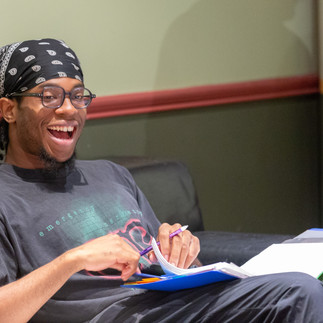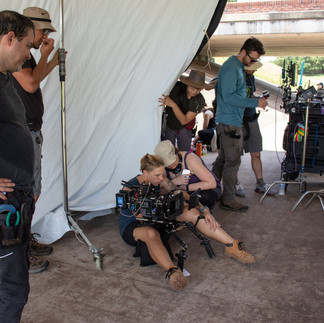Celebrating Our Crew
- Jenny Waldo
- Oct 17, 2021
- 3 min read
Anyone following the news may have heard about the union that oversees all the crew positions in film and television IATSE narrowly avoid a strike with a last-minute deal with the studios and major streamers. Horrific stories, championed by the Instagram account IA_Stories, chronicled tales from members and families of those crew members who suffered terrible work conditions, impossible expectations, the disrespect of feeling/being expendable, and the inability to have a healthy work-life balance were no shock to those of us in and familiar with the industry.
In the 20+ years I've been in and around this industry, I've been lucky to have worked with people who respected their crew and modeled reasonable production schedules. It's been a conscientious choice on my part as a director, even back in my USC days, to model those kinds of sets as well that keep to 12-hour days (or less), break for lunch, 12-hour turnarounds, and to pay attention when things are going astray. I'll never forget a Key Grip on a student film chewing me out about my 12-hour days when he had to pack up the grip truck and drive it to a secure location before driving home, in Los Angeles where commuting is awful, reminding me that my 12-hour turnarounds were more like 8 for him with picking up that grip truck the next morning.
On Acid Test, our first week was tough. We had ambitious days planned, one that was a complete WTF on my part looking back on it (that was the only day we had to return for pickups). With limited money, time, and resources, our days were pushing 12-hours and we had our crew wrapping up well past that. My 1st AD and Producer Anna Tran met with me and my DP Kerianne Parker and said we could not continue at this pace or risk burnout or worse. So we re-grouped and re-planned the rest of the shoot. Part of the problem was that Kerianne had come on close to production and we didn't have a lot of time to coordinate a shooting plan off of my directing plans, so we met each day an hour before call time to specifically map out how we were going to shoot each scene based on my storyboards and shot-lists. Using our production running time from the previous week as data, we scrapped shots that were not going to be reasonable to even hope for. And as the hours dwindled on some days where even those measures fell short, we found ourselves making incredible creative decisions that made our film better and kept us on our schedule.
We shot Acid Test in 21 days with less than $50,000. For the 16 days after that first week, we rarely hit the 12 hour mark, and that was including wrap. Not every day was fun and it still was really hard work, but we became a family. And I heard multiple times from crew members that they while they had experienced the "in the trenches" mentality on other sets, they had never felt like the Director and the above-the-line people were in those trenches with them until Acid Test.
I don't understand why respect and effective communication aren't prized above all else. I can understand that the best pre-production can sometimes be met with extraordinary conditions. We're certainly seeing that during COVID. But it matters, to treat people kindly, to honor their time and their talent.
Maybe a lot of this comes down to the fact that I see film as a team-effort, where collaboration is key, where people add in their talents to make the final project better than anything one person could have imagined. No one should be expendable - why would you work with anyone you thought that way about? I couldn't have made anything without my cast and crew, and Acid Test is definitely better for their efforts. I appreciate and celebrate this achievement - premiering our baby to the world - with them. I look forward to working with you again on a new adventure.
--Jenny Waldo
Writer/Director
Acid Test






































































































































































































































Comments